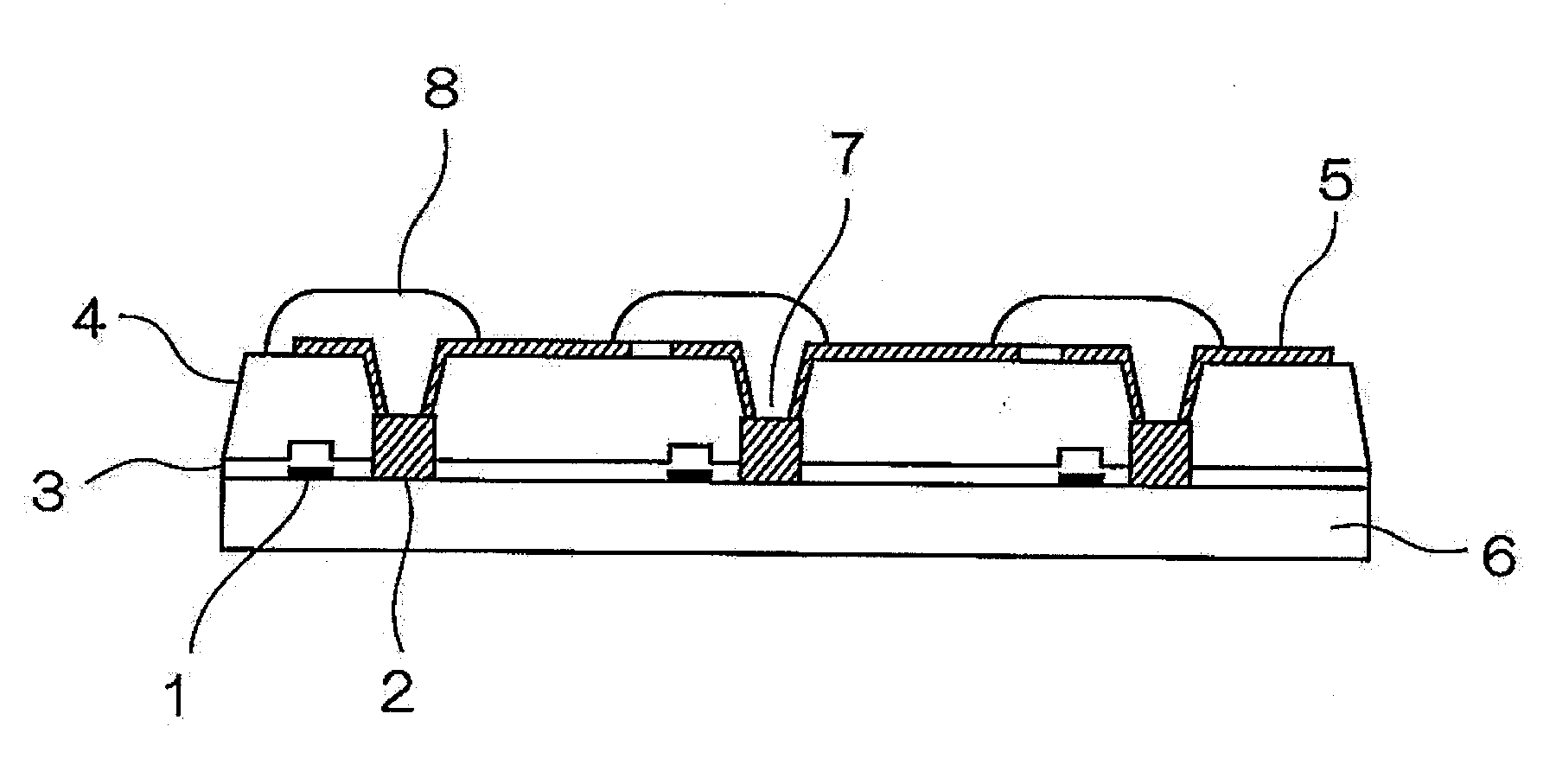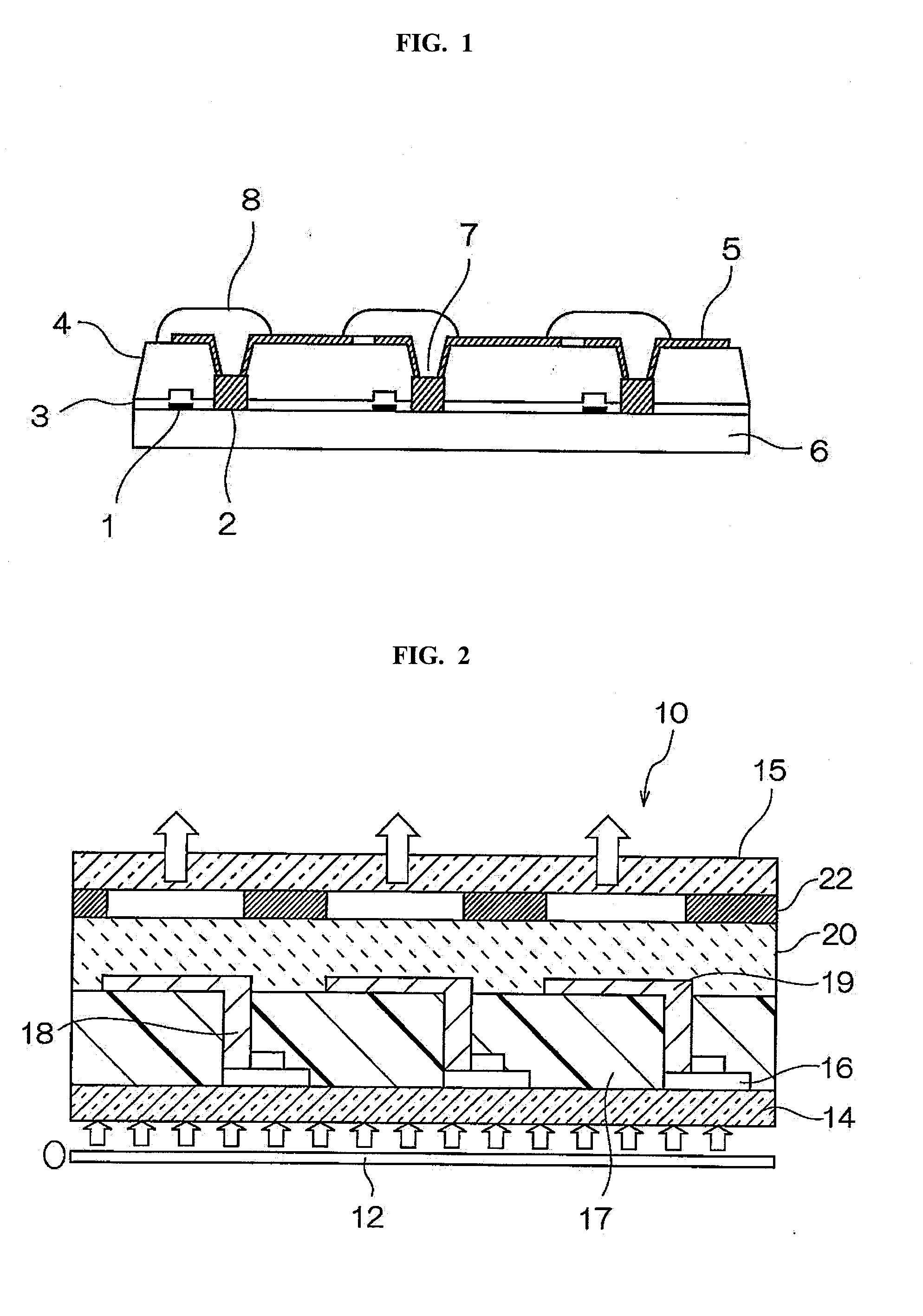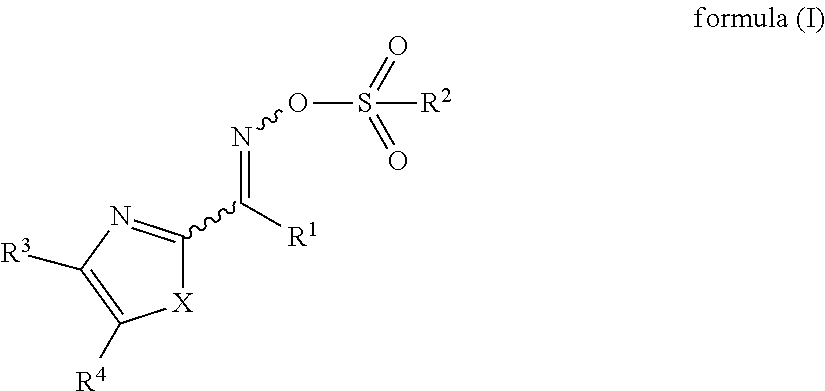Positive photosensitive resin composition, method for forming cured film, cured film, organic el display device and liquid crystal display device
- Summary
- Abstract
- Description
- Claims
- Application Information
AI Technical Summary
Benefits of technology
Problems solved by technology
Method used
Image
Examples
synthesis example 1
Synthesis of Exemplary Compound b-16
[0198]1-1. Synthesis of Synthesis Intermediate b-16A
[0199]In 100 ml of ethanol (manufactured by Wako Pure Chemical Industries, Ltd.), 12.5 g of 2-amino-benzenethiol (manufactured by Tokyo Chemical Industry Co., Ltd.) were dissolved at room temperature (25° C.). Next, 6.6 g of malononitrile (manufactured by Tokyo Chemical Industry Co., Ltd.) were added dropwise, and the mixture was stirred and allowed to react for 4 hours at room temperature. The resultant precipitate was collected by filtering and dried, thereby obtaining a synthesis intermediate b-16A.
[0200]1-2. Synthesis of Exemplary Compound b-16
[0201]In 50 ml of tetrahydrofuran (manufactured by Wako Pure Chemical Industries, Ltd.), 8.71 g of synthesis intermediate b-16A were dissolved. Then, the reaction solution was cooled to a temperature of 5° C. or lower in an ice bath. Next, 11.6 g of SM-28 (a methanol solution of sodium methoxide, 28% by mass, manufactured by Wako Pure Chemical Industri...
synthesis example 2
Synthesis of Exemplary Compound b-9
[0206]In 50 ml of tetrahydrofuran (manufactured by Wako Pure Chemical Industries, Ltd.), 8.71 g of synthesis intermediate b-16A obtained in Synthesis Example 1 were mixed. The mixture was cooled to 5° C. or lower in an ice bath. Next, 11.6 g of SM-28 (28% by weight, manufactured by Wako Pure Chemical Industries, Ltd.) were added dropwise, and the mixture was stirred and allowed to react in an ice bath for 0.5 hours. Further, 7.03 g of isopentyl nitrite were added dropwise while keeping the internal temperature at 20° C. or lower. After the completion of dropping, the temperature of the reaction solution was raised to room temperature, and stirred for 1 hour.
[0207]Subsequently, 200 ml of water and 2 g of sodium hydroxide were added to the reaction solution to dissolve a precipitate, and the solution was separated with 100 ml of toluene to remove impurities, whereby an aqueous layer was obtained. The obtained aqueous layer was cooled to 5° C. or low...
synthesis example 4
Exemplary Compound b-31
[0219]Exemplary compound b-31 was synthesized in the same manner as exemplary compound b-33 in Synthesis Example 3, except that phenylacetyl chloride used as a starting material was changed to 4-chlorophenylacetyl chloride (manufactured by Sigma-Aldrich Co., Ltd.).
[0220]In the positive photosensitive resin composition of the present invention, the content of the specific acid generator (B) is preferably within a range of 0.001 to 5% by mass, and in terms of solid matter, the content is preferably within a range of 0.002 to 2% by mass. When the content of the specific acid generator (B) is within the above range, it is advantageous in that a positive photosensitive resin composition having both high sensitivity and high transparency is obtained.
[0221]The positive photosensitive resin composition of the invention may include, as an optional component, various compounds according to purposes within the range of not degrading the advantages of the invention, in a...
PUM
 Login to View More
Login to View More Abstract
Description
Claims
Application Information
 Login to View More
Login to View More - Generate Ideas
- Intellectual Property
- Life Sciences
- Materials
- Tech Scout
- Unparalleled Data Quality
- Higher Quality Content
- 60% Fewer Hallucinations
Browse by: Latest US Patents, China's latest patents, Technical Efficacy Thesaurus, Application Domain, Technology Topic, Popular Technical Reports.
© 2025 PatSnap. All rights reserved.Legal|Privacy policy|Modern Slavery Act Transparency Statement|Sitemap|About US| Contact US: help@patsnap.com



